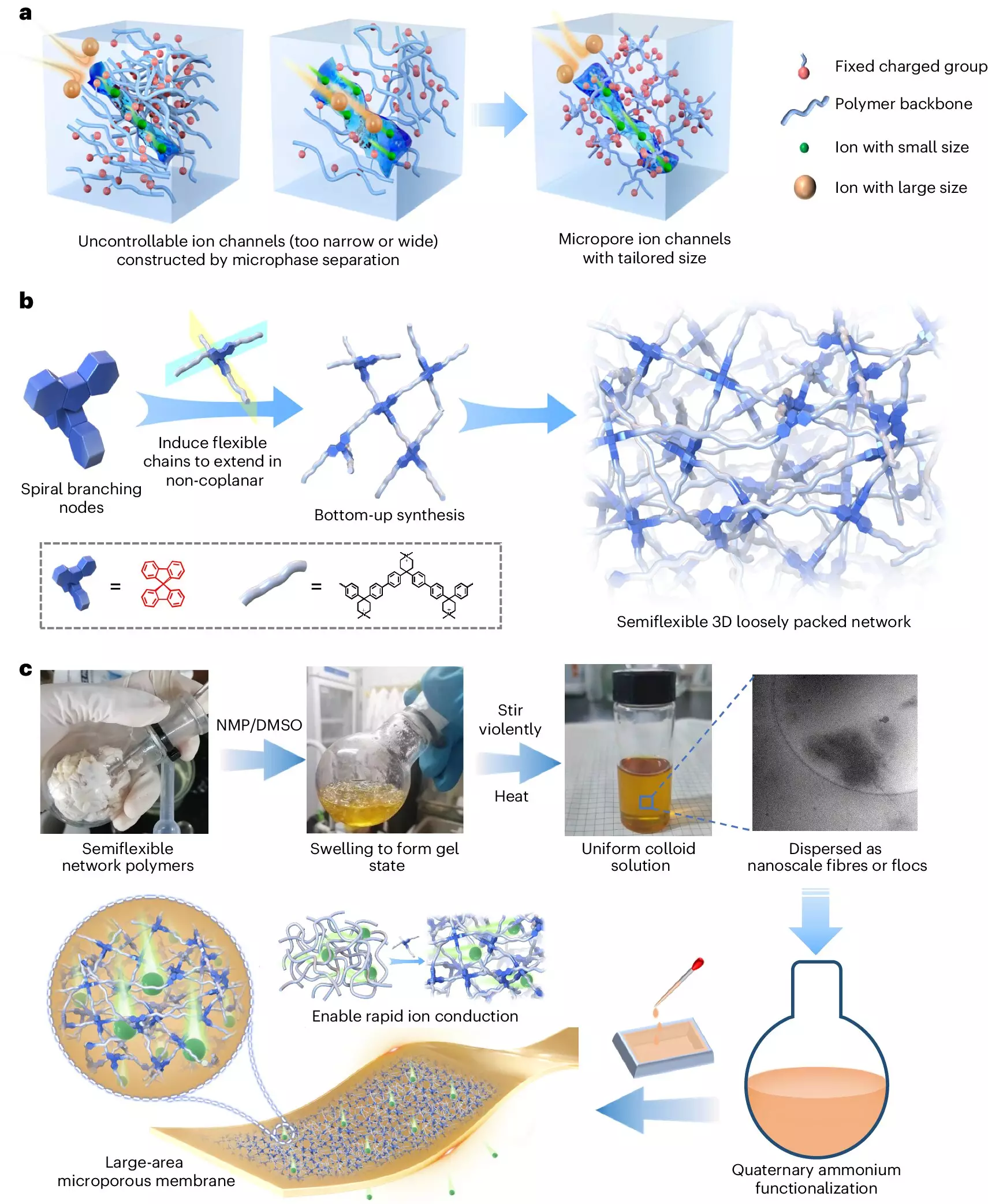An exciting development has emerged from a team of researchers at the University of Science and Technology of China, led by Prof. Xu Tongwen and Ge Xiaolin, in the field of anion exchange membranes (AEMs). Their groundbreaking work has led to the design of a novel spiro-branched polymeric membrane with highly connected sub-nanometer microporous ion channels, showcasing exceptional performance in flow battery applications.
The study published in Nature Sustainability highlights the importance of efficient ion conduction in various applications such as chemical separations, CO2 conversion, and energy storage systems. Traditional methods, relying on microphase separation, have struggled to balance ion conductivity, selectivity, and stability, leading to performance tradeoffs that limit overall membrane efficiency.
Development of Novel Membrane Structure
To address these challenges, the research team developed a spiro-branched polymeric membrane using stereotwisted spiro scaffolds and poly (aryl piperidinium) with an all-carbon backbone. This innovative structure combines the rigidity of spiro units with the flexibility of branched chains, aiming to enhance free volume within the polymer for efficient ion transport pathways.
Extensive structural analyses, including scanning electron microscopy (SEM) and transmission electron microscopy (TEM), revealed a semi-flexible 3D network with highly connected sub-nanometer ion channels. Performance evaluations demonstrated exceptional anion conductivity, with chloride ion conductivities exceeding 60 mS cm-1 at 30°C and up to 120 mS cm-1 at 80°C. In flow battery applications, the membranes exhibited superior power density and energy efficiency, enabling rapid charge and discharge cycles at high current densities.
Applications and Implications
The breakthrough in spiro-branched polymeric membranes not only advances polymer science but also offers a new strategy for membrane material design. The membranes’ excellent chemical stability in vanadium redox flow batteries suggests their potential for long-term use in energy storage systems, addressing various energy and environmental challenges. This research paves the way for more efficient and sustainable energy storage technologies, with wide-ranging implications for the field.
The research conducted by the team at the University of Science and Technology of China represents a significant step forward in the development of anion exchange membranes. Their innovative approach to membrane design and structural characterization demonstrates the potential for improving the performance and sustainability of various applications, from chemical separations to energy storage systems. The implications of this breakthrough are far-reaching, with the potential to revolutionize the field of membrane materials and contribute to more efficient and sustainable energy technologies.


Leave a Reply